Recent Comments
No comments to show.
Posted by admin in Babies 0-6 months, General, Pregnancy on March 25th, 2015
Gone on maternity leave and need something to fill in the afternoons while you wait for your baby to arrive? We’ve rounded up our 10 favorite movies to watch during pregnancy. There’s some funnies, some that’ll bring a tear and lots of happy endings.


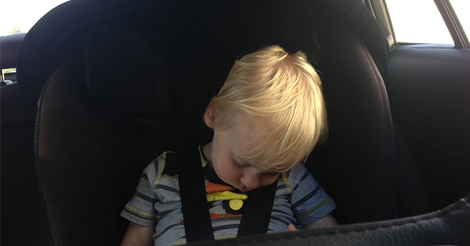
Thanks to Infa-Secure for this terrific post on head flop.
We get a lot of questions about children falling asleep in their child restraints, and how to stop or minimise their heads falling forward when they do. ‘Head flop’ is a complicated issue, and there isn’t a simple single answer.
A child’s head falling forward or to the side when they fall asleep in their child restraint is something that can happen in any forward facing child restraint. There are a number of issues that can contribute to this – the angle of recline of the vehicle seat back or seat base, the recline adjustment of the child restraint, the position of the child in the restraint, padding, pillows and headrest positions and the way in which the restraint has been installed. Many parents find that the same child in the same child restraint falls forward in one car but not another, or that one child will fall forward, but another in the same car and same restraint won’t.
When we design a child restraint, we must comply with the Australian Standard AS/NZS 1754. This is a mandatory standard, and it has some of the most stringent requirements in the world. This standard restricts the level of recline of a child restraint to be less than 45 degrees from the vertical, which is measured whilst sitting on a vehicle test seat base.
The Australian Standard committee CS085 decided to limit the amount of recline allowed to 45 degrees, as there was a concern that by increasing the recline angle, the child is then laying back. For forward facing restraints, instead of distributing the impact forces over the area of contact between the child’s body and the webbing of the inbuilt harness (in a forward facing carseat) or seat belt (in a booster seat) during a frontal crash, the child could have a propensity to slide down into the seat base, and cause a dynamic compressive load of the child’s spine. Basically, their neck and spine could take the increasing loads during the impact force, rather than having it spread evenly over their chest and torso.
We feel that the potential for injury is dependent on the arc traced by the head during a side impact crash, and whether the child’s head would come back within the side wings or not before contacting anything. It’s not actually testable with the current generation of crash test dummies, which cannot be positioned with their heads slumped forward to simulate sleeping. We approached Neuroscience Research Australia regarding this, and they commented that in reality there is very little real world data to answer this question, as we almost never know what position a child’s head was in at the time of a crash.
When child restraints are tested to the Australian Standard for compliance (and also for CREP) all testing is conducted with an average sized child for the age range of the child seat, with the child seat in both the most upright and most reclined positions (as permitted by the Standard). No testing is conducted to determine the child restraints ability to offer protection to the child whilst they are either asleep or sitting out of position (as mentioned above, this is currently un-testable).
An interesting parallel to this can be seen in the greater motor vehicle industry. Every motor vehicle manufactured and sold in Australia must meet the Australian Design Rules, and when testing the car’s airbags and seat belts, the testing is done with an average sized adult sitting the front seats with the recline angle set as per the manufacturers specifications (nominally 20 degrees) and the seat positioned in the central track. No testing is conducted of the vehicle with the adult asleep or sitting out of position.
So while we can’t control every aspect of every specific child / restraint / vehicle combination, we can take preventative steps to minimise the chance of our children’s heads falling forward.
We recommend that parents check that a restraint is suitable for both their child and their vehicle. Most baby stores will allow you to try a seat in your vehicle prior to purchase. Be sure to try the recline settings, and if your child is old enough, ask them to pretend to sleep, or go as floppy as they can – make a game out of it!
Plan for longer trips ahead of time by adjusting your vehicle’s back seat recline (if possible) or installing the restraint in its most reclined configuration.
Ensuring the child is fitted in the restraint correctly can help minimise the amount a child falls forward. The key here is a correctly fitted harness – it should be snug, and you should only be able to get a single finger under it.
Using a folded cloth nappy or towel under rearward facing child restraints to assist with giving it adequate recline, keeping in mind not to recline the child seat more than 45 degrees from the vertical.
We do not recommend third party or after-market pillows, supports or accessories to ‘prop’ the child’s head up, as these may alter the performance of the restraint in an accident and could pose a safety risk to the child and / or other passengers in the vehicle. Products which specifically restrain the child’s head within the seat are excluded from the Australian Carseat Accessory Standard AS/NZS 8005:2013 under clause 3.2, as they are viewed to have serious potential for injury to the child in the event of an accident. We strongly recommend against the use of these kinds of products. In addition to being potentially dangerous, they are a band-aid fix for a larger problem, and we feel they promote a lax attitude toward making sure a child is fitted correctly in the correct kind of child restraint.
Visit Infa-Secure here by clicking this link.
Posted by admin in Babies 0-6 months, General, How to, Pregnancy on March 18th, 2015
Having a new baby in the house is a real joy, all those “firsts” we look forward to, the peaceful times of cuddles on the couch and quiet walks before bed. But having a new baby also makes you surprisingly busy with all the care they require. Doing a little preparing and planning ahead can mean the difference between chaos and serenity. Some quick simple tips to help you save time and get some “me time” in are set out below.
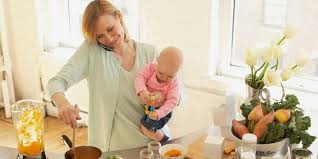
Posted by admin in Babies 0-6 months, Explore Sydney, General, How to, Safety, Travelling with kids on March 18th, 2015
Our good friends at Maxi-Cosi were the first infant car seat provider to offer ISOFIX-compatible infant car seats with the launch of its ISOGO range. ISOGO is an ISOFIX compatible system for Maxi-Cosi child restraints.
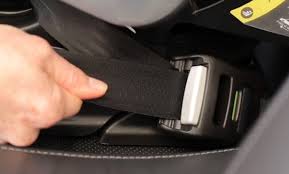
As experts in child mobility, Maxi-Cosi is an international leader in the production and testing of child restraint products. Maxi-Cosi’s ISOGO is a simple and user friendly latch system that enables parents and care givers to safely connect their Maxi-Cosi child restraints to their vehicle’s ISOFIX lower anchorages in a simple step. With its green and red indicators, the question of whether or not you’ve done it correctly is eliminated giving parents peace of mind that the installation has been done correctly at just a glance of the indicator.
With a staggering 88% of infant car seats not fitted correctly, Australian parents have been desperate for ISOFIX-compatible seats so this range has been very welcomed by our customers.
ISOFIX compatible systems must comply with the Australian/ New Zealand 1754 Standard. Seats that comply must be fitted with rigid or flexible lower attachment connectors as well as top tether straps. The dynamic testing required varies from country to country and therefore a child restraint that is purchased overseas is illegal and any insurance will be null and void in the event of an accident. The Australian/ New Zealand 1754 Standard is known to be the most stringent in the world.
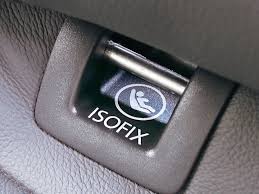
Designed to make fitting an infant car seat sercurely easier, ISOFIX is an international standardised fitting system for attaching infant car seats securely without the need for the vehicle lap sash seatbelt. Most modern cars sold in Australia offer ISOFIX mounting points, but if you’re not sure take a look at the base of your backseat in the gap between the base of the seat and the back of the seat. Generally there will be some writing saying ISOFIX above the mounting points; if in doubt, check with your local mechanic. See image below:
According to Maxi-Cosi, “fitting a Maxi-Cosi ISOGO car seat is easy. Simply click your ISOGO car seat into your car’s ISOFIX lower anchorage points and click the upper tether strap. You can then check the seat is correctly installed by making sure the harness tension colour indicator is green”.
“Our family is always on the go, so it is wonderful to finally have a car seat that?we can fit so quickly and be confident that it is properly fitted and secure,” says mother-of-two and Maxi-Cosi Ambassador, Rebecca Judd.
“Maxi-Cosi ISOGO has taken the guess work out of fitting our kids’ car seats, and we now have greater flexibility should grandparents or friends wish to borrow a car seat for a special day out”.
Maxi-Cosi ISOGO car seats and capsules are available for both hire and purchase on our site.
Hiring a TENS for your baby’s birth you can achieve an easier, less painful labour.
TENS is short for Transcutaneous Electrical Nerve Stimulation. A TENS machine is generally a battery powered unit that emits little pulses of electrical energy via electrodes or sticky pads that are placed on the skin of the person using the machine.
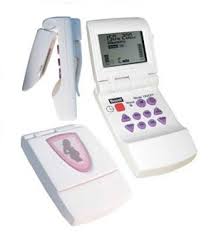
TENS works bysending light electrical pulses of electricity into the body through the skin. Your body reacts to the impulses by releasing its own pain killing chemicals (endorphins).
The level of pain relief obtained depends on the individual. Some clients have reported that they required no other pain relief during their labours.
Unlike many TENS machines, our Obstar Obstetric TENS machine is designed specifically for use in childbirth. Its hugely popular and has a range of easy features:
We recommend you arrange to have the hire TENS machine delivered at least 2 weeks before your baby is set to arrive.
We suggest you start using your obstetric TENS unit as early as you can once labour begins, to allow time for your body’s endorphins to rise and counteract the pain.
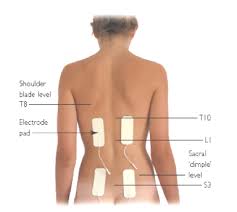
For effective management of labour pain, place 2 electrodes just below your bra line; the other 2 electrodes should be placed just above the top of your underpants on either side of the spine. See image below.
Yes, you can try it before labour on your forearm to feel the different pulses. See the instruction book included in your hire pack for more details.
Yes, you can still use heat packs, massage, gas or pethidine. You can not use TENS if you are in the shower or bath.
We also sell brand new Obstar Obstetric TENS units and spare electrode pads, just have a look at our Buy page.
To book your hire unit you can pop one in your hire cart here: https://www.rockabyebabyhire.com.au/shop/tens-machines/
Or just email Danni at jess@rockabyebabyhire.com.au or call 02 9589 4942 and we can reserve one for you and send it to you ready for your baby’s birth.
Posted by admin in Babies 0-6 months, Explore Sydney, General, Safety on July 8th, 2014
When you’re newly pregnant and considering setting up your nursery, its natural to want to have the best of everything for your baby. But these days, with $2,000+ prams and $1,500 beds, purchasing all this brand new just doesn’t make sense. This is where we step in, enabling families to hire rather than buy their nursery equipment. Our motto is “Why buy when you can hire?” but what does that really mean? What are the average savings on hiring –v- buying? We’ve prepared a comparison table that contrasts the cost of hiring your nursery equipment –v- paying RRP, keeping in mind that these are all items that are only required for a limited period in your nursery.
*All hire costs are based on a 6 month hire except the breastpump in this table which we’ve estimated will be hired for 4 weeks.
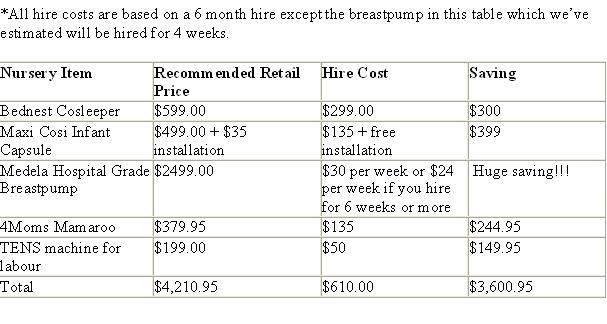

All up, a couple who choose to hire just these few nursery items that are really only required for such a limited amount of time in your baby’s early days could save themselves over 80% of the retail cost of the very same items. Its quite a big saving and something to think about when doing your budgeting.
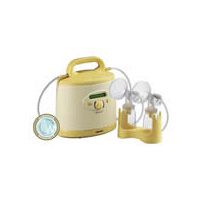
Hiring is also a good way to try products you’re not sure about, before you buy and are then stuck with them sitting collecting dust in the garage or waiting for the day you can get the camera out, take the pictures, then list it all on Ebay and hope you can recoup at least a bit of the outlay.
All of our baby equipment for hire is purchased brand new direct from the manufacturer or importer, every piece is carefully cleaned and safety checked before each hire and is regularly replaced to maintain our exacting standards. You’re not going to lose out on quality just because you hire – we have a large range of premium, luxury baby products from brands such as Leander, Bugaboo, Seed Organics, Baby Jogger, Maxi Cosi, 4Moms and many more.
Every member of our staff is a qualified and accredited Infant Restraint Fitter and we offer complimentary fitting of all hired infant restraints so that you can rest assured that your baby’s safety is our priority. All hire baby capsules come with free professional installation.
Hiring baby equipment is also great for holidays, whether for yourself or for relatives or friends who are coming to visit. It can greatly reduce stress, save you those exorbitant excess baggage fees (without even mentioning the potential for serious damage to your baby equipment when its in transit). Using our Sydney Airport Concierge Service means you can have everything ready and waiting in your hire car by the time you arrive.

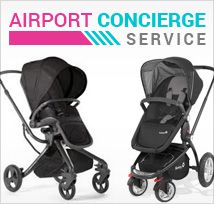
Call us today on 9589 4942 for a quote on your nursery needs – we can create a discounted package deal to suit any family or email through your wish list to Danni at jess@rockabyebabyhire.com.au.
Posted by admin in Babies 0-6 months, Breastfeeding, General on June 19th, 2014
Yep you read it right. The winner of this comp will pay just $1 for a Mimijumi Very Hungry baby bottle.
Mothers, Nurses, Doctors, Lactation Experts and Industrial Designers have come together to create the perfect feeding bottle.
With natural colours, textures and forms, the Mimijumi Very Hungry feeding bottle provides the perfect complement to breastfeeding and the best possible transition to bottle feeding. The innovative nipple design on the Mimijumi Very Hungry feeding bottle replicates a mother’s breast, creating the most natural feeding and latching experience for a happier and healthier bottle fed baby. Functioning like a breast, the non-free-flow nipple design means your baby has to actually latch onto the nipple and suck in order to produce the milk. These elements combined replicates breastfeeding and provides the most natural bottle feeding experience possible.
The Very Hungry feeding bottle is easy to open and clean, and is top rack dishwasher safe. Our unique integrated venting system means it is anti-colic and anti gas, and our bottles have a skid-free base for those hard one-handed refills. The Very Hungry mimijumi feeding bottle and parts are produced in Austria with the highest quality standards to protect your baby, and all bottles are BPA Free, Latex Free, EA Free, totally toxin free and exceed all Australian safety standards. The Very Hungry feeding bottle is the Next Breast Thing.
All bottles come standard with a Flow Rate 1 Nipple.
Comment on our post telling us in 20 words or less why you’d like to win the Mimijumi Very Hungry Baby Bottle and like our page on Facebook and you’re done.
Winner will be chosen at random and notified via our Blog and Facebook Page.
https://www.facebook.com/Rockabyebabyequipmenthire
a Rafflecopter giveaway